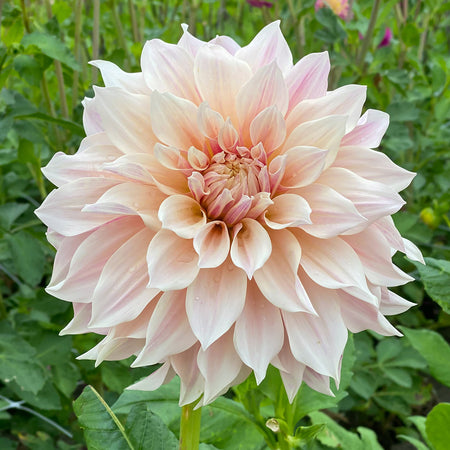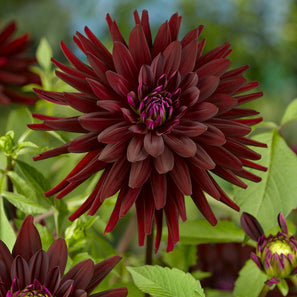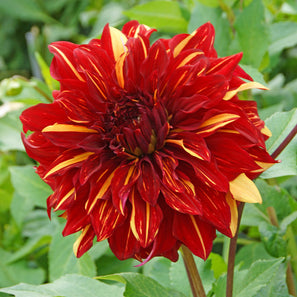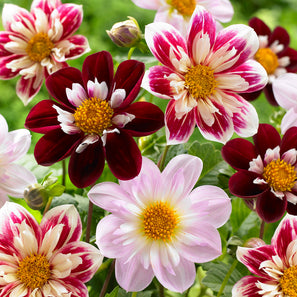CAFÉ AU LAIT
Product Description:
Gorgeous, showy blooms coming in right after lilies to brighten the mid-to-late-summer garden and see it through to frost. These magnificent plants make exceptional cut flowers and just keep blooming when many annuals and perennials are getting tired. Keep the spent blooms trimmed off for tidiness and more prolific flower production. Hardy in zones 8 and warmer but may be lifted and overwintered indoors in colder climates.
Bulbs start shipping mid to late February. Available only within the contiguous US.
| Hardiness Zone | 8+ |
General
Dahlias are garden favorites with brilliantly colored blooms that grace the landscape and make exceptional fresh cut flowers. They are hardy in zone 8 and warmer. As the plants tend to be tall with big blooms, they should be staked to help keep them upright. Staking at planting time will reduce the chance of damaging the tubers or roots. Tomato cages work well for plant support. Dahlias can be grown directly in the ground or in large (5 gallon+) containers. Wait until the soil is warmed and the threat of frost is past before planting. A good rule of thumb is to plant your dahlia tubers when you plant tomatoes.
Spacing
Plant the tubers 4-6 inches deep with the growing point or eye facing up. The tubers can be positioned horizontally in the hole. Space the tubers 12-18 inches apart.
Soil Requirements
Dahlias prefer rich, well-drained soil. Amend the soil with some bone meal and a thick layer of composted organic matter dug in to the top 6-8 inches of ground.
Irrigation
Wait until the first green shoots appear before watering for the first time. Keep the soil evenly moist thereafter.
Light Requirements
Plant in full sun for best blooms.
Fertilization Requirements
Fertilize monthly with an all-purpose fertilizer while the plants are actively growing.
Pests
Slugs and snails can be very damaging to younger plants. Slug bait, such as Sluggo, is very effective especially when the plants are small.
Optional Pinch
When the plants reach about 12 inches tall, cut the plants down to about 8-9 inches tall. This will encourage the plants to bush out and produce more blooms.
Cutting Flowers
Choose fully or nearly fully opened flowers for cutting, as the blooms do not develop much after being harvested. Floral preservative added to the water will prolong the vase life and keep the colors vivid.
End of Season Care
In zones 8 and warmer, dahlia tubers may successfully overwinter in the ground, but there are advantages to digging them up and overwintering indoors. Over a season of growth, dahlias develop multiple viable tubers that can be separated from the plant. When re-planted, each division can produce its own dahlia plant, so this is an excellent method for multiplying your dahlia crop from year to year. Wait until the foliage turns yellow and dies back before digging the plants. Cut back the stems, brush off any soil from the tubers and hang them upside-down (if possible) for a few days to reduce their moisture. Once the skin on the tubers begins to wrinkle, they are dry enough to store. This is the time to divide the tubers, which can be planted as described above in the spring. When dividing, make sure there is at least one eye, or growing point, on each division. Store the tubers in peat moss in a cool (40-45°F) area until ready to plant. Check the tubers occasionally for any rotted divisions and discard them.





